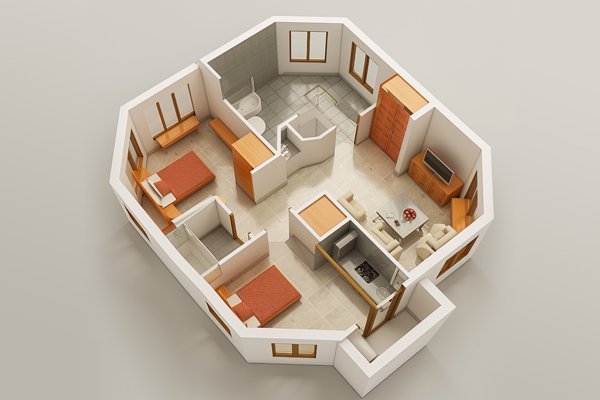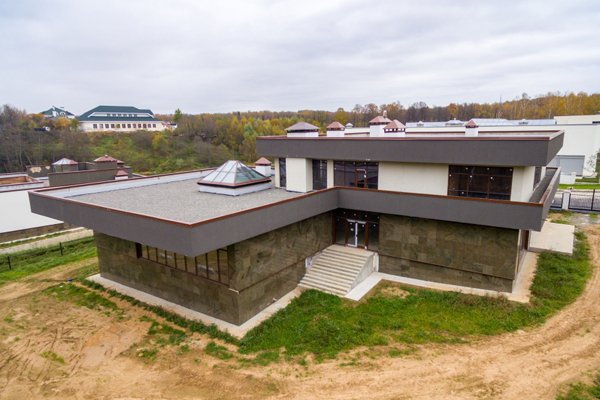
New Ways to Build: Exploring 3D Printed Homes in India
The construction industry is about to experience a big change with the rise of 3D printing technology, which could completely transform the way homes are built. In India, where there's a high demand for affordable housing, 3D-printed homes might be a promising solution.
In this blog, we will get into what 3D-printed construction is all about and the technology behind it. We will also explore its benefits, challenges, and the progress India is making toward making 3D-printed homes a reality. Let’s start with what 3D is all about.
What is 3D Construction Printing?
3D construction printing, which is also known as additive manufacturing. 3D changes the way buildings are made, removing traditional methods and using layers of construction materials to build structures from digital designs. 3D construction, a new method, is faster, cheaper, and more flexible for designing buildings.
The 3D process usually includes:
- Making a digital design.
- Getting the materials ready.
- Printing the structure.
- Finishing it will lead to precise and customized buildings.
Benefits of Having 3D Printed Homes:
Affordable Housing Solutions
One of the main benefits of 3D-printed houses is that they are an affordable answer to the increasing need for homes in India. With a large and growing population, more and more people are looking for housing each year. Online 3D printing services can quickly and efficiently create homes, which helps lower construction costs and speeds up the building process.
Quick Building Times
3D printing makes it possible to build homes in just a few days or weeks, unlike traditional construction, which can take months or even years. This speed is a big plus in India, where there is a high demand for homes, and the building process can often be slow. With 3D-printed houses, homes can be built much faster and can help with the housing needs of many families.
Sustainable and Eco-Friendly
3D-printed houses are a greener and more sustainable choice than traditional building methods. This technology makes better use of materials, which means less waste and lower construction costs. In India, 3D printing can use eco-friendly materials like recycled plastics and biodegradable options, helping to reduce the environmental impact of buildings. This is especially important when people are becoming more concerned about environmental issues.
Customizable and Unique Designs
With 3D printing, it's possible to create unique and customized home designs that traditional methods can't achieve. This is a big advantage in India, where many people want personalized homes. Homeowners can pick from a variety of designs, materials, and features, allowing them to build homes that truly reflect their style and preferences.
Better Quality and Safety Standards
3D printing in India helps create homes that are built accurately and precisely. This is very important because the quality and safety of housing is a big issue in India. With 3D-printed homes, the construction is done with great care, which lowers the chances of mistakes and ensures that the houses are safe and of high quality.
Tips in 3D Printed Houses in India

As technology grows quickly and more people need affordable homes, 3D-printed houses are becoming popular in India. However, there are some challenges to address in order to make this technology work well in the Indian housing market. Here are some tips to help overcome these challenges and get the most out of 3D-printed homes in India.
Develop Clear Regulations and Guidelines
To start using 3D-printed houses in India, there must be clear rules and guidelines. The Indian government should create a framework for using 3D printing in housing. This should include rules about building safety, codes, and how to protect the environment. Having these guidelines will help everyone understand how to develop and use 3D-printed homes properly.
Educate the Public
It's also important to teach people about the benefits of 3D-printed housing. It can be done through public awareness campaigns, workshops, and training sessions. By helping people learn about this technology, it will reduce doubts or concerns people might have, making it easier to gain support for 3D-printed homes.
Invest in Technology
Investing in 3D printing technology is key for building houses in India. This means putting money into research and development and buying good quality 3D printers and materials. When construction companies and investors invest in technology, they can use the best and most efficient methods to create high-quality homes.
Address the Cost of Technology
One big hurdle to using 3D printing widely in India is the cost. To tackle this issue, construction companies and investors can look into financing options like leasing or sharing 3D printers. This can help lower the initial costs. Companies should also work on creating cheaper materials and methods to make high-quality homes, which will further reduce the overall costs of 3D-printed housing.
Train Skilled Workers
Training skilled workers to operate and maintain 3D printers is crucial. This will help solve the problem of not having enough skilled labor and ensure that the technology is used properly. Companies should invest in training programs, apprenticeships, and other initiatives to build a skilled workforce that can support 3D-printed housing in India.
Embrace Innovation
Finally, to make the most of 3D-printed housing in India, companies and investors should be open to new ideas and innovations. This includes trying out different materials, designs, and construction techniques to find better ways to build homes efficiently and affordably. By embracing innovation, they can help develop and implement 3D-printed housing solutions that are more affordable, efficient, and sustainable for the people of India.
3D Construction Printing Process

Steps for 3D Printing a Structure
- Digital Design
The first step is to create a detailed digital model of the structure using special design software. This model acts like a blueprint for the 3D printer, showing all the details like size and features.
- Material Preparation
After the design is ready, you can choose and prepare the right materials for printing. For building homes, 3D printable concrete is often used because it's strong and durable.
- Printing Process
With the design and materials ready, the 3D printer starts its work. The printer uses a nozzle to carefully lay down layers of the construction material according to the digital model, building the structure step by step.
- Layer-by-Layer Construction
As the printer continues, it adds one layer on top of another. Each new layer sticks to the one below it, ensuring the shape is accurate and matches the original design.
- Curing and Finishing
Once the printing is done, the structure needs to cure, which helps make it stronger. This usually means letting the concrete set for a certain amount of time. After curing, some finishing touches may be applied to smooth surfaces or improve the look and function of the structure.
Do You Know About India's First 3D-Printed House?
Additive manufacturing technology creates a 3D-printed house by adding layers of building material one by one, based on a digital design.
The opening of India's first 3D-printed house project in Chennai was a collaboration between TVASTA and the Indian Institute of Technology (IIT) Madras. One of the best things about 3D-printed houses is their cost-effectiveness.
This affordability, along with shorter construction times, lower labor costs, and less material waste, makes 3D-printed houses a practical and sustainable choice for many homeowners.
FAQs
Is it cheaper to build a 3D-printed house?
It depends on factors such as the availability of the materials used, the efforts required to assemble the construction, and many more.
What are the negatives of 3D-printed houses?
A lack of engineers with the right knowledge, the transformation of current construction professions. The entire design procedure must be handled differently since 3D design printers cannot use conventional blueprints.
What are 3D-printed homes made of?
Concrete and mortar are the common materials used for 3D construction.
How long would a 3D-printed house last?
It's a very new development, and they are made up of durable materials. The lifespan is between 50-100 years.









